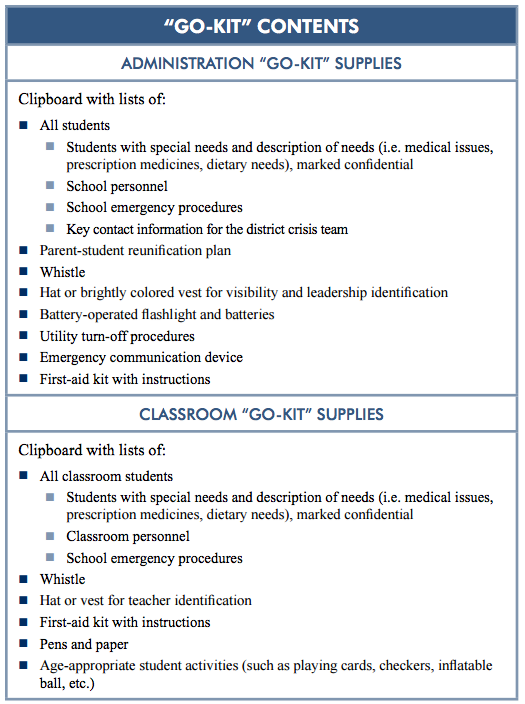GO TO:
PANDEMICS
DIABETES
SPECIAL NEEDS STUDENTS
NASN.org: Emergency Preparedness and Response in the School Setting
CDC: Schools and Childcare Centers
FEMA: Multi-hazard Emergency Planning for Schools
Red Cross: Prepare for Emergencies
Medscape: Many U.S. Schools Still Not Fully Prepared for Disasters
CDC.gov: Helping Children Cope with Emergencies
 TUTORIALS/WEBINARS
TUTORIALS/WEBINARS
NASN: Emergency Preparedness: Back to the Basics
Free School Nurse Emergency Preparedness course
 PDFs
PDFs
FEMA: Sample School Emergency Operations Plan
The First 30 Seconds: The Window of Opportunity to Save Lives in School Emergency Situations
FEMA: Prepare for Emergencies Now
Early Warning Timely Response: A Guide to Safe Schools
School Crisis Guide
Practical Information on Crisis Planning: A Guide for Schools and Communities
FEMA: Emergency Supply List
CDC: Backpack Emergency Card
FEMA: Family Communication Plan – Let Them Know You’re Okay
FEMA: Family Communication Plan – Text, Don’t Talk
FEMA: Create Your Family Emergency Communication Plan
FEMA: Family Emergency Communication Plan
Pack Your Disaster Kit with Poison Help
Lockout Door Poster
Drill in Progress – No One In or Out Door Poster
PANDEMICS
COVID-19: Preparing for Widespread Illness in Your School Community
CDC: COVID-19 Childcare, Schools, and Youth Programs
NASN: Coronavirus Disease 2019 Resources
Preparedness 101: Zombie Pandemic
DIABETES
Diabetes.org: Tips for Emergency Preparedness
 PDFs
PDFs
Diabetes.org: Medical Advice for People with Diabetes in Emergency Situations
American Red Cross: Disaster Preparedness for Persons with Diabetes
SPECIAL NEEDS STUDENTS
Emergency plans need to include provisions for students with disabilities, such as learning and developmental disabilities, visual and hearing impairments, and physical limitations. Attention is also needed for students with limited English proficiency to make sure they understand the emergency procedures.
Things to consider in the planning process:
- Identify alternative evacuation routes and shelter for students with mobility problems
- Develop a communication system for the visual and hearing impaired
- Assign a buddy for each student with a disability
- Communicate with all students using a common vocabulary
- Train staff in procedures to assist students with disabilities
CDC: Improving Preparedness for Children and Youth with Special Needs
Emergency Preparedness for Children with Special Needs
CDC: Keeping Children with Disabilities Safe During Emergencies
NFPA: Personal Emergency Evacuation Planning Tool for School Students with Disabilities

